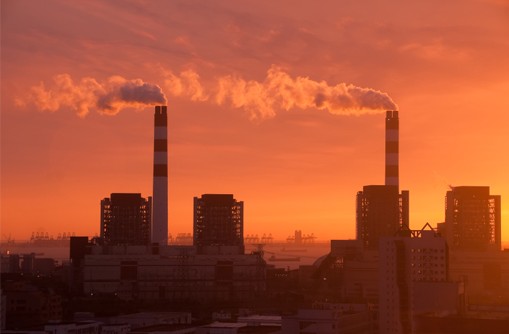
By Oisin O’Brien
Shanghai has developed over the last three decades from a small city into one of the world’s premier industrial and financial centers. This structural transformation has been accompanied by rapid population growth, from under 10 million in 1975 to 16.58 million in 2010 (UN-Habitat, 2010). With growth occurring in both industry and population, demand for energy has grown rapidly, straining the energy sector, with a constant need for expanding energy supply. Taking climate change into consideration through a detailed climate risk assessment (Mehrotra et al., 2009), an increased vulnerability can be observed for the sector. In addition to evaluating the city’s current adaptation and mitigation responses, further recommendations for fostering climate resilience are articulated below.
Sector Specific Risks
Historically, Shanghai has relied on coal-fueled power plants to meet its energy demand. As a number of these plants were constructed during the first half of the 20th century, their efficiency and emissions standards are low. These plants emit high levels of Green House Gases (Ping, 2010). Rapid industrial development and population growth have increased demand for energy, a trend that will continue. According to UN Expo Report, total electricity consumed for 2007 was 107.2 billion kWh, with an average annual growth rate of almost 10% since 2000 (Ping, 2010). As demand for energy continues to rise, the vulnerability of the existing stock will increase due to the following expected climate change impacts: increased flooding (Cruz et al, 2007), increased mean temperature, frequency of heat wave events, and increased intensity of the urban heat island effects (Blake et al., 2010).
Adaptation and Mitigation Responses
Shanghai has begun implementing measures to reform and upgrade its energy infrastructure in light of the risks it faces due to climate change. Extensive programs to shut down or upgrade outdated coal-burning power plants, to consolidate energy intense industries into industrial parks, to diversify fuel sources to include greater usage of natural gas, renewables and nuclear, have all been undertaken to varying degrees (Ping, 2010). Additionally, development of the service sector has been encouraged (Walcott & Pannell, 2007), creating an economy less dependent on high-energy inputs necessary for an industrial economy. Shanghai has also initiated efficiency measures, such as installing solar-powered water heating units on buildings throughout the city (Ping, 2010), lowering demand for domestic purposes.
Policy Recommendations
Shanghai has already made significant progress in decommissioning or updating its outdated power plant stock. Developing a new diverse stock that utilizes an array of non-fossil fuel sources and is strategically located in flood-resilient areas will safeguard against an increasing frequency of extreme weather events. Stronger restrictions on further development of the energy-intensive industrial sector will significantly reduce demand for energy, allowing for the increase in domestic usage that will likely accompany the city’s rising standard of living. Incentives should be provided for energy-intensive industries to operate during low demand periods. Local agency needs to be fostered so that Shanghai can set its own autonomous adaptation goals separate from the mitigation goals that the 12th Five Year Plan articulates. Increasing public-private partnerships to strengthen flexible localized agency within the city, and a greater capacity for continuous evaluation will be key in this endeavor.
References
Mehrotra, S., C.E. Natenzon, A. Omojola, R. Folorunsho, J. Gilbride & C. Rosenzweig. (2009). Framework for city climate risk assessment. Washington, DC: World Bank.
This article is a product of Professor Shagun Mehrotra’s Climate Change and Cities class. Views expressed are entirely those of the individual author.